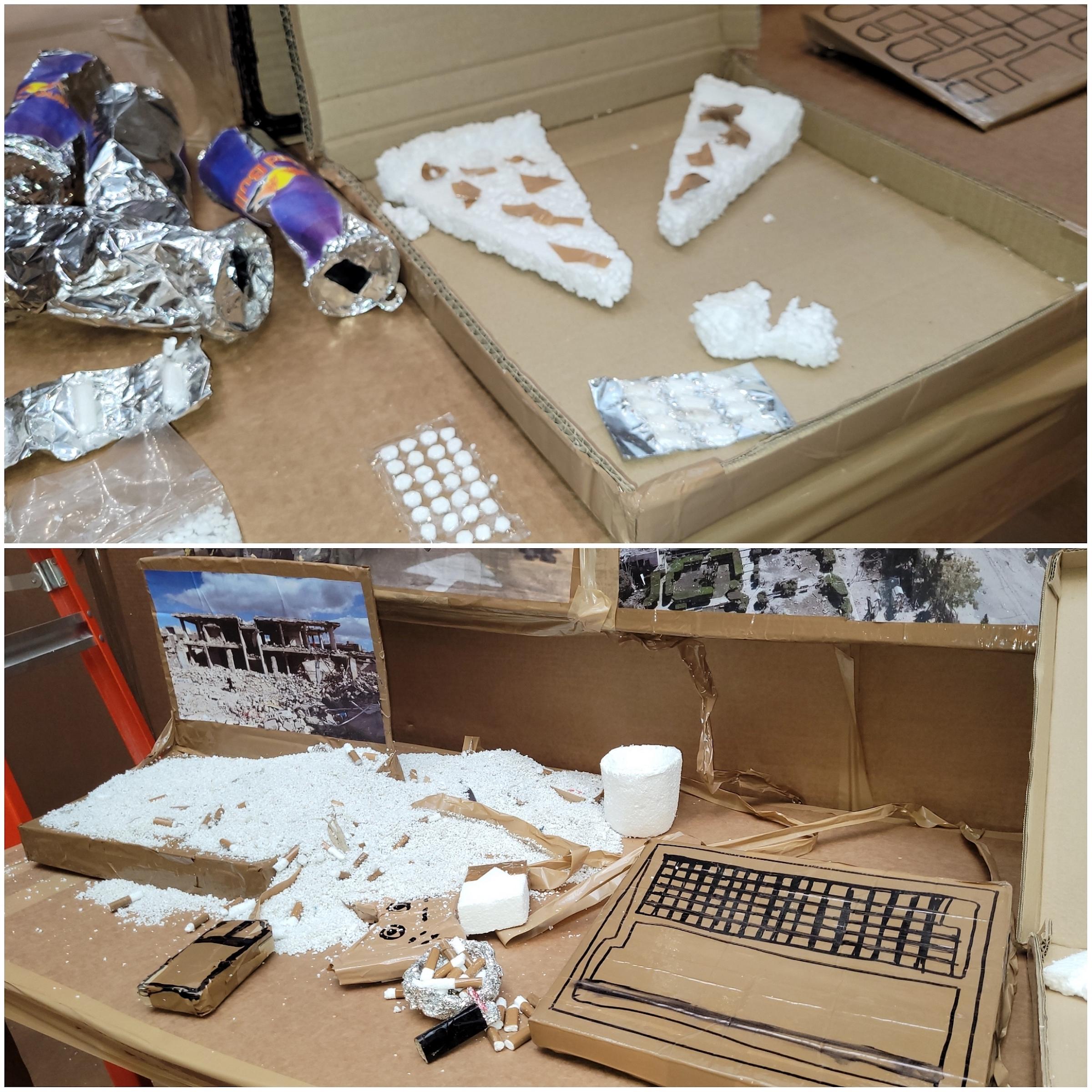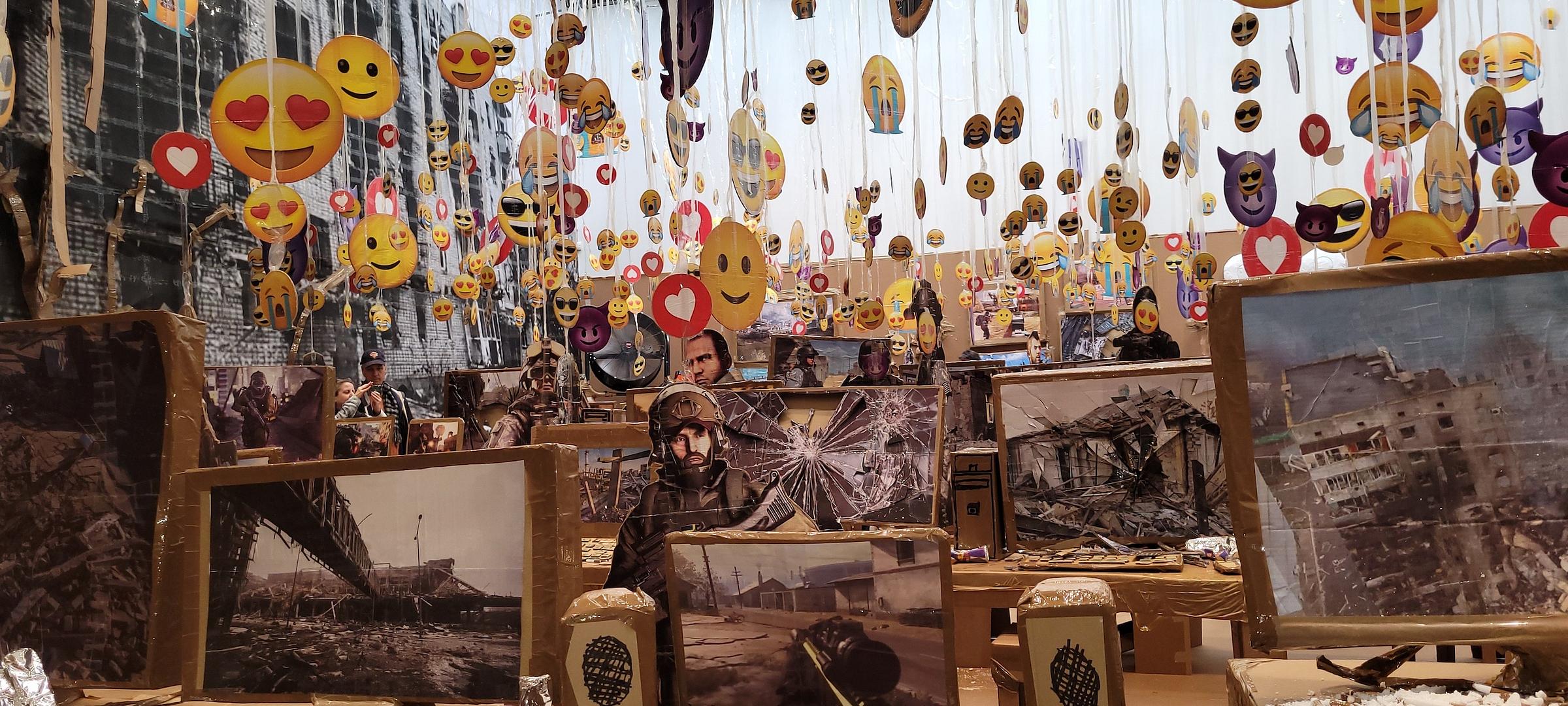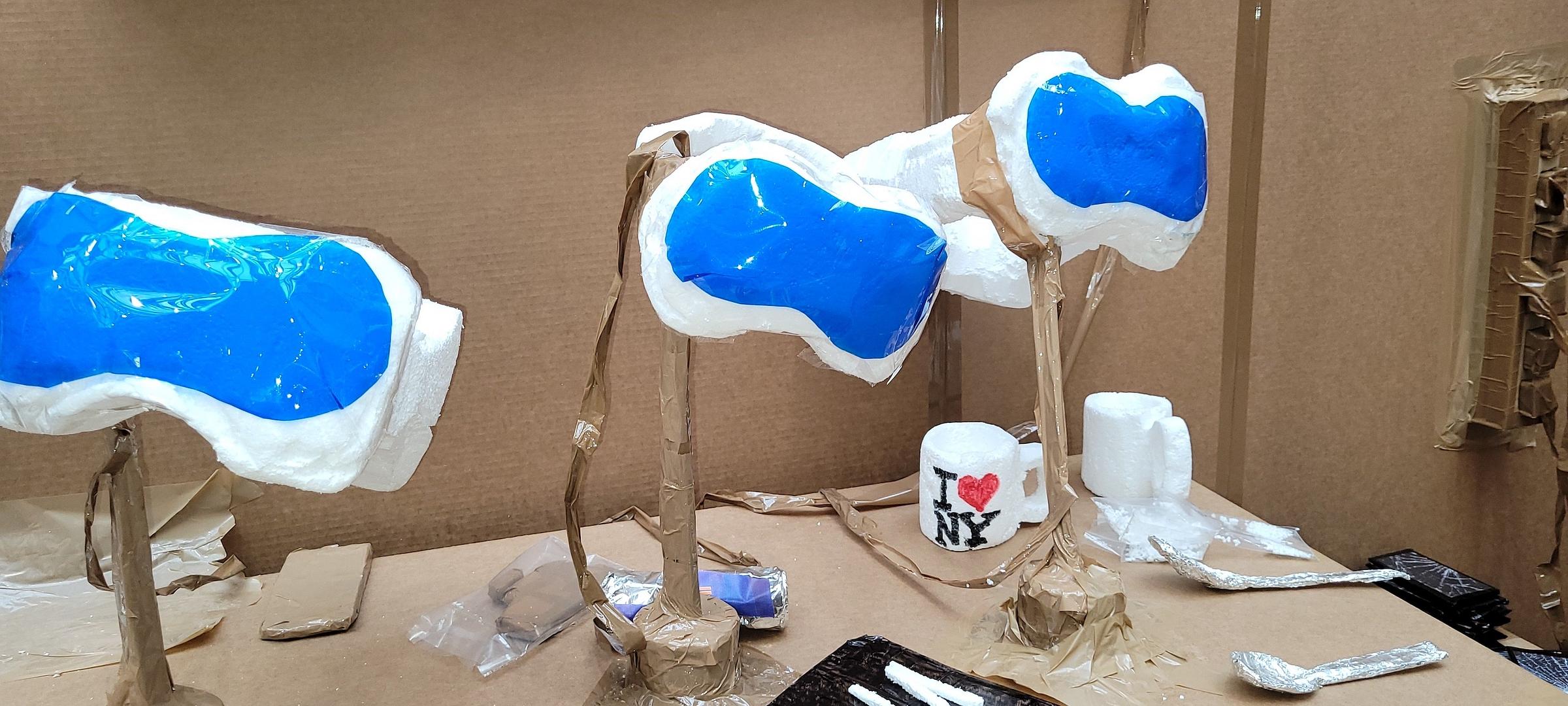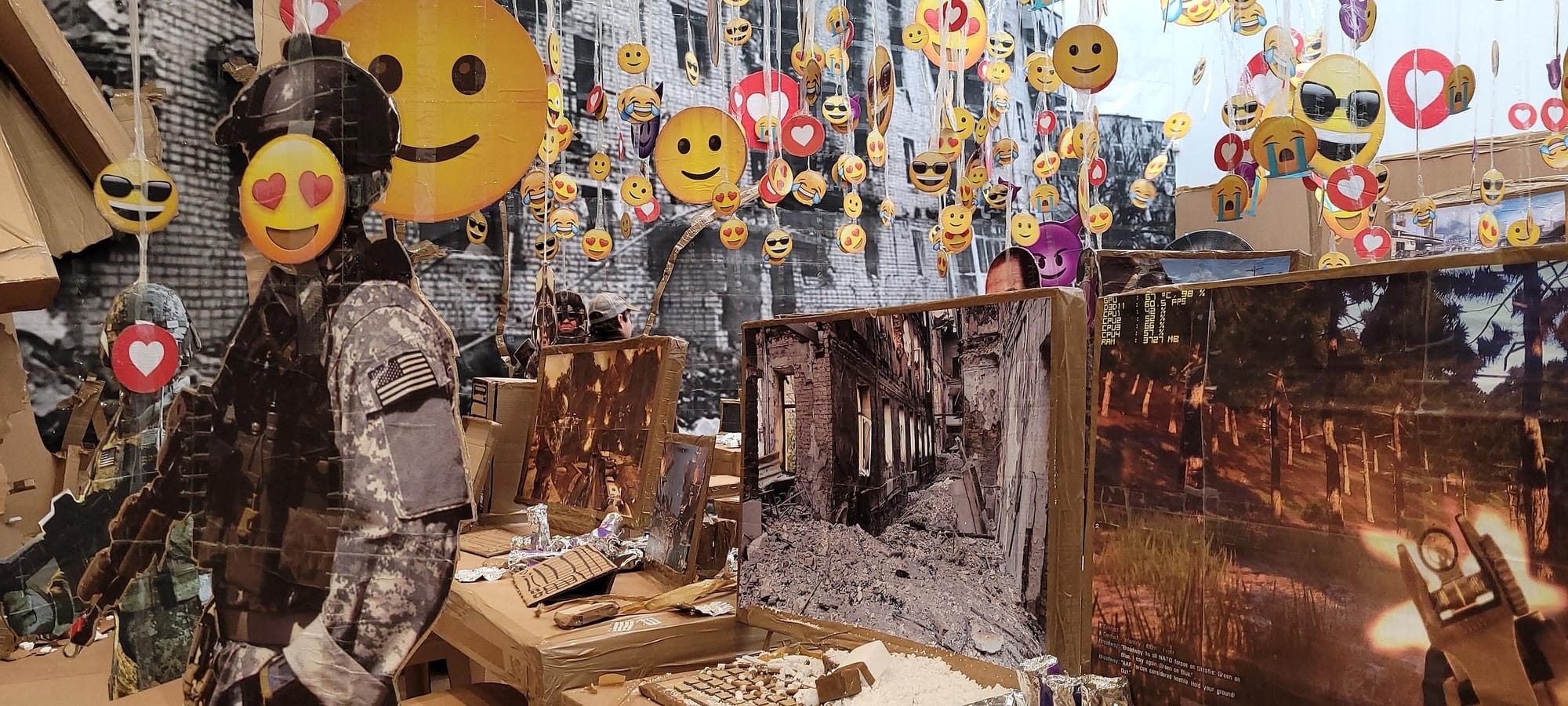Thomas Hirschhorn: Fake it, Fake it —till you Fake it
Gladstone Gallery
530 West 21st Street
Through March 2, 2024
Stepping through cluttered aisles of warfare, punctuated by the ubiquitous emojis of social media, visitors at Gladstone Gallery in New York City walk smack-center into today’s zeitgeist materialized. Thomas Hirschhorn’s Fake it, Fake it — till you Fake it stares you in the face, with a reflection of our contemporary culture. It forces the questions: “What have we become and where are we going?”
“I think it’s a really vital, important, violent exhibition,” said visitor Joel Murphy, who used to make art but now works in technology, designing electronics and hardware. “It’s important to see the way we’re fighting wars these days. With art, there’s room for metaphor, room for telling a very dark, visceral story without having to help people feel better.”
The images in the show appear to be photojournalism of the urban battlefronts of wars in Ukraine, Gaza, Afghanistan, Iraq. Hirschhorn shapes and combines print images, cardboard, tape, polystyrene, and aluminum foil in crudely fashioned caricatures of computers, video consoles, and cell phones. He uses these same materials to construct rough similitudes of headsets, cigarettes, pizza, and Red Bull cans. These objects thematically connect games and virtual reality with the harsh reality of war. The exhibition’s mixed media of cheap, disposable materials shout out a parody, satirizing the advances in our technology and civilization.

The exhibition felt as if I had taken a trip to a bombed-out flea market, showcasing the destruction of war. It reminded me of the C.S. Lewis quote: “God whispers to us in our pleasures, speaks in our conscience, but shouts in our pain: it is His megaphone to rouse a deaf world.”
What has become today’s megaphone?

Set up on tables in rows, an overwhelming, heaping mess depicts exploded buildings and ruined neighborhoods in shards of war scenes on shattered computer screens made out of pictures glued to cardboard. Amidst images of buildings blown to collapsing skeletons, dangling flat, uniformed, armed soldiers, and yellow-faced and purple emojis that define our current generation swing from plastic tape stretching from the ceiling.
In a statement about his installation, the artist commented on the friction and clash of the real and virtual worlds. His exhibition speaks to the “far-reaching consequences” of “our coexistence and communicational behavior” creating a “‘fake-utopia’-dystopia.”
The bombardment of virtual hearts and smiley faces on social media parachute into the devastation of people’s lives. Hirschhorn seems to ask, “Is hell on Earth, violence and war, or a world where people electronically consume others’ pain as entertainment, expressing cartoonish declarations of ‘I care!’ via emojis?” Have people become so self-involved with cultural communications projecting happy, perfect personas of performative compassion in a race toward denying our foibles and weaknesses that make us human — our very souls?
Visitor Adam Frelin, an artist and associate professor of studio art at SUNY University of Albany, pointed to Hirschhorn’s talent for creating objects in a “low-fi,” hand-made way that conveys vulnerability and flaws, mixed with the intense topic of violence.
“Sometimes I’ve seen shows of his that go so dark in terms of subject matter, they almost become like a black hole,” said Frelin.
He added, “On the lowest rung of the sculpture ladder, making art with tape and cardboard, this is a great example of how you do not need complicated, technical processes to accomplish something that is thematically and conceptually sophisticated. It’s going to take some time to absorb what’s happening here.”

Throughout my life, several people have told me they believe that hell and heaven begin on Earth. War is frequently and convincingly described as hell on Earth. Both Meat Loaf and Dante Alighieri have written about going to hell and back for love. People go to hell and back for whom and what they love — other people, places, countries, and ideas. There was a time when we never shared TikTok videos in place of a letter or conversation with someone we’ll never hug again.
On the wall near the door of the gallery room, Hirschhorn spray painted a letter addressed to “Dear World.” He warns us not only against artificial intelligence but against artificiality in willpower, belief, faith, hope, and resistance. He alerts us to beware and to never give up human competence.
Few people would argue against the hope of banishing the scourge of war. But this exhibition may remind viewers it is an immense privilege to genuinely care and genuinely be cared for, to truly love and to be truly loved, in other words — to never give up being human.






